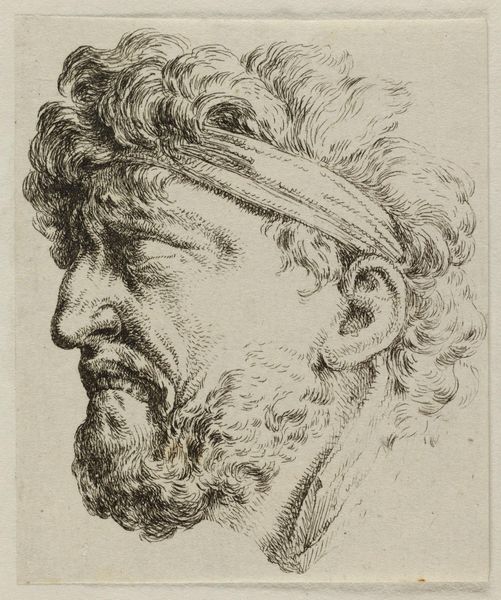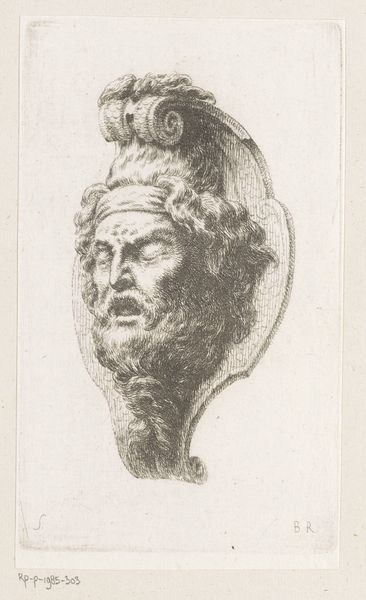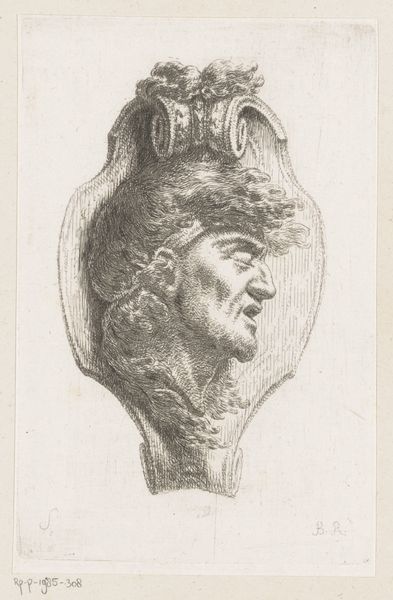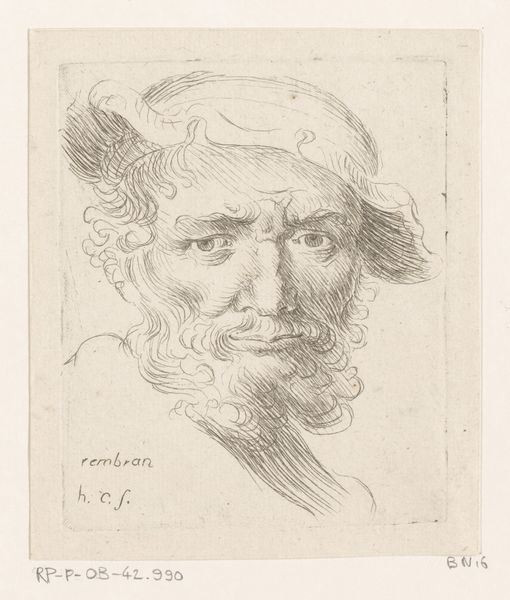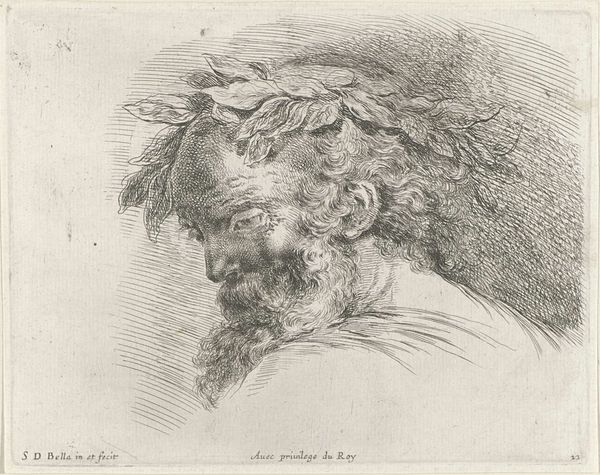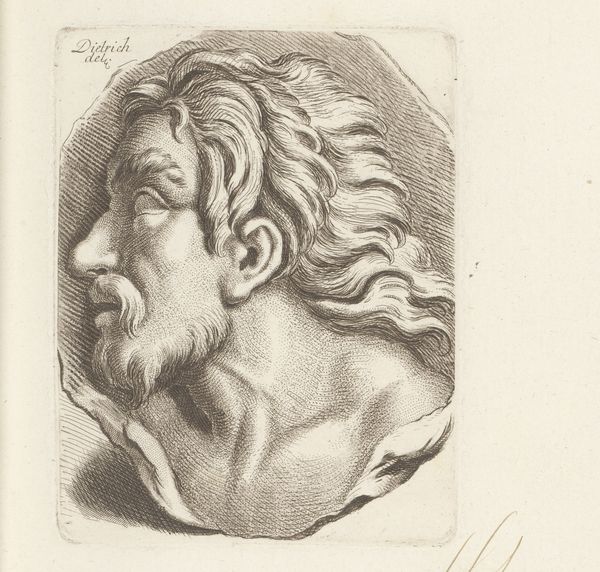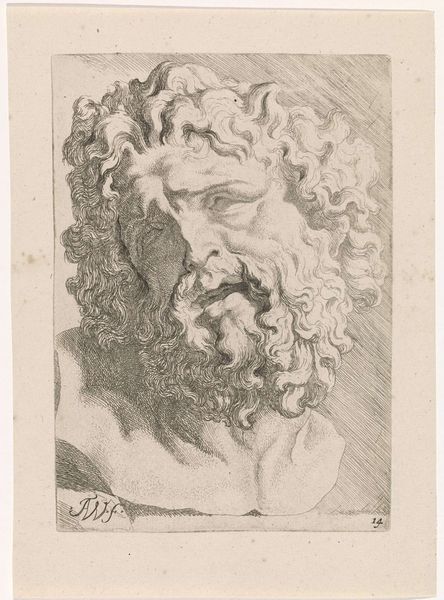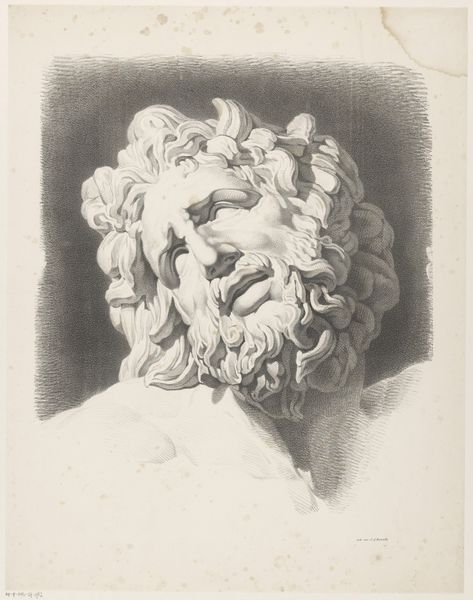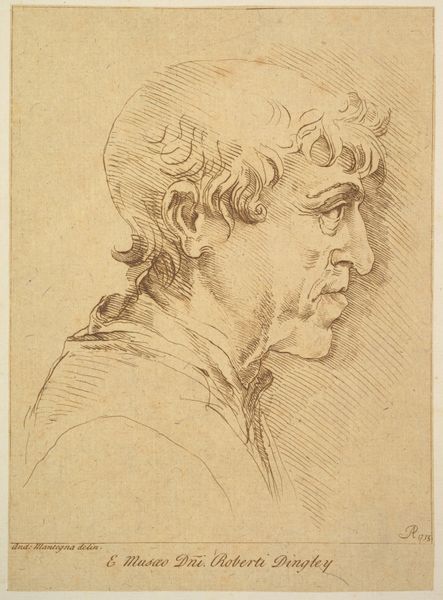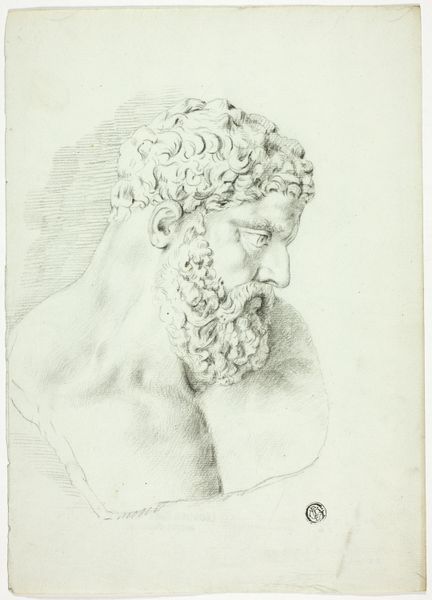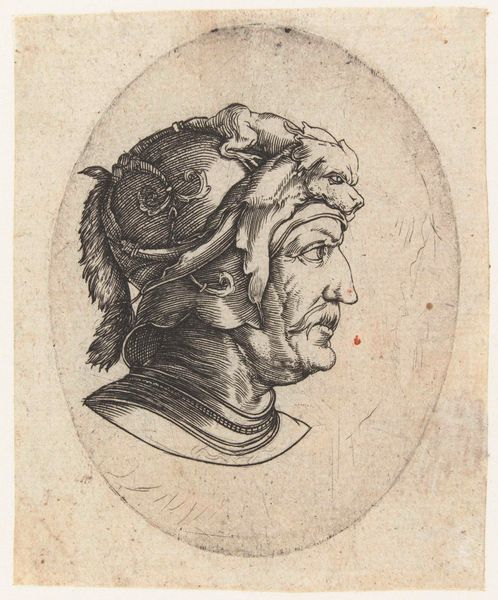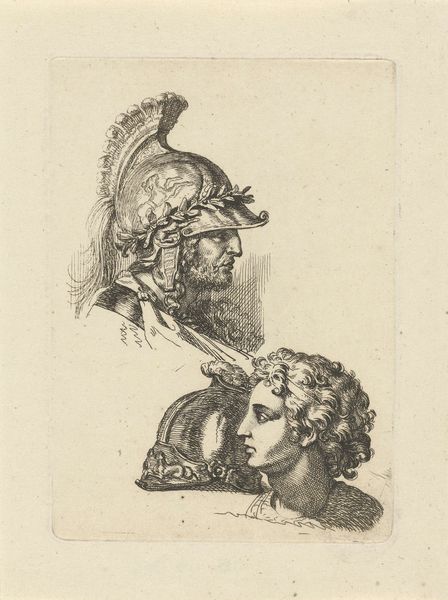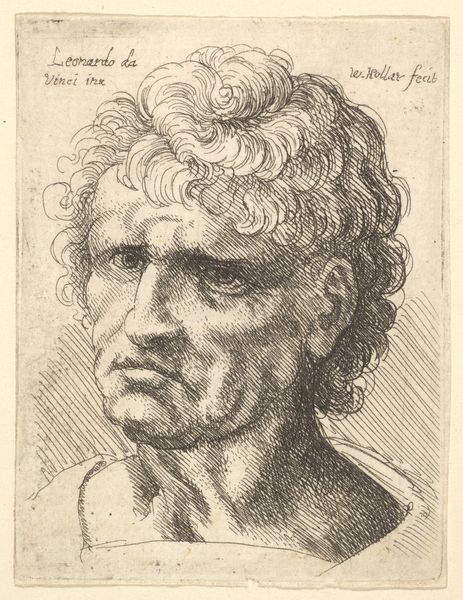
print, etching
#
portrait
#
baroque
# print
#
etching
#
figuration
#
form
#
line
Dimensions: height 183 mm, width 148 mm
Copyright: Rijks Museum: Open Domain
Curator: This intriguing etching, dating from 1651-1652, is titled "Man met hoed," or "Man with a Hat," and is by Lucas (II) Vorsterman, now held in the Rijksmuseum collection. The print employs fine lines to depict the bust of a man in profile, with particular attention given to the texture of his hair and the distinctive, winged hat he wears. Editor: My first impression is that it’s rather mournful. The lines are delicate, yes, but the man's downward gaze and slightly furrowed brow lend an air of pensiveness. It's as though we've caught him in a moment of quiet contemplation or maybe, melancholic reflection. Curator: I agree. The use of line in Baroque prints, particularly etchings, served to evoke emotion and atmosphere. Here, it amplifies the contours and shadowing of his face to direct focus and suggest an interiority to his mind. We should ask ourselves what a hat like that may have meant during that time, and how that would relate to class or symbolism. Editor: The hat, or helmet with feathered wings to be more accurate, could be interpreted in a few ways. The most literal meaning might be derived from the headwear, with the implication that this is an authoritative leader figure from a community militia, from the elite, perhaps someone who occupies public-facing roles. Curator: Right, hats like these had very important implications at the time. This headwear points back to Hermes, or Mercury as the Romans knew him, but the artist has changed the traditional hat into a helm of war. A potent visual message there. Editor: It’s a clear example of how cultural symbols evolve and get repurposed across eras and cultures. Consider its impact depending on how widely dispersed and circulated an etching such as this could be in Vorsterman’s time. Who had access to it? Who did not? And what ideas or discussions may have stemmed from it? Curator: The act of portrayal becomes crucial here. As you suggest, this isn't simply about documenting a likeness. Vorsterman gives a sense of presence. I agree it is interesting to contemplate the layers of representation and who had access to this "presence" back then, especially in our digitally connected present. Editor: Looking closer, it highlights the nuances of identity, status, and access, making us question the narratives surrounding such figures in both historical and contemporary contexts. This close looking opens to broader social commentaries through time.
Comments
No comments
Be the first to comment and join the conversation on the ultimate creative platform.
